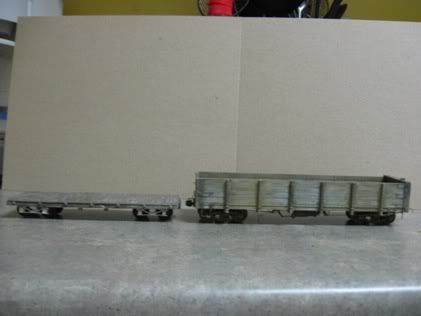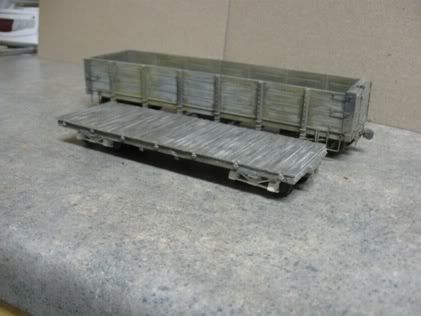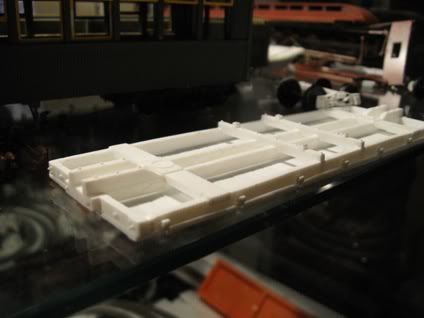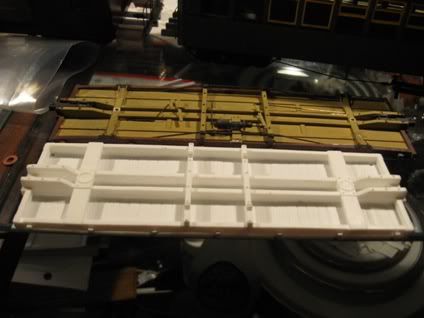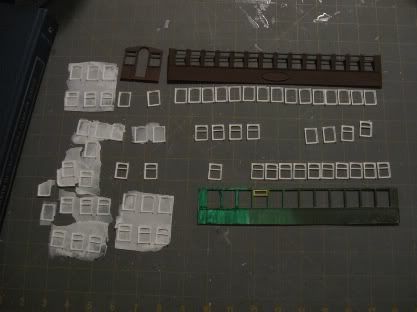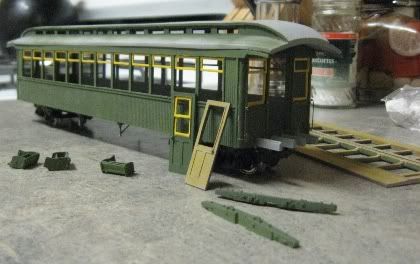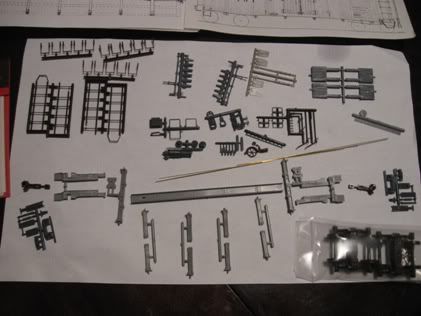
Here are the parts. At bottom is the steel underframe, trucks, and draft gear (plus Grandt Line's couplers which I regard as the best value for a coupler: function, appearance, and price). Above the SUF is the brake parts. Above them are the C&S reefer specific parts (the C&S door latches are on the sprue with the corner irons, not the ones with the hinges). To the left of these are the ladders and stirrups (which are far faster and easier than bending wires as on the stock car, gondola, and box car...the reefer only requires a few grabs to be bent)
Here are the plans and info on the SUF:

I picked up a set of CDS Dry Transfers for these cars a few years back. I'm still a couple sets of C&S stock car decals short...
------------------------------------------------------------------
My first 23' flat car kit has received all but its red paint. The deck is quite dark on the top and more brown (like the underframe) underneath. This version I am building with out the intermediate sills (I'll build an example gon with the int sills).
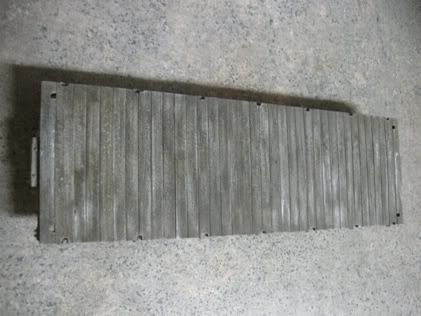
The deck
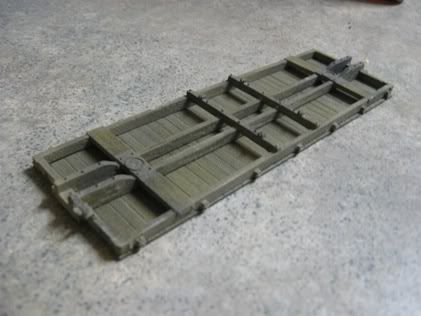
The underframe
Comparisons against a Grandt Line 30' C&S coal car:
